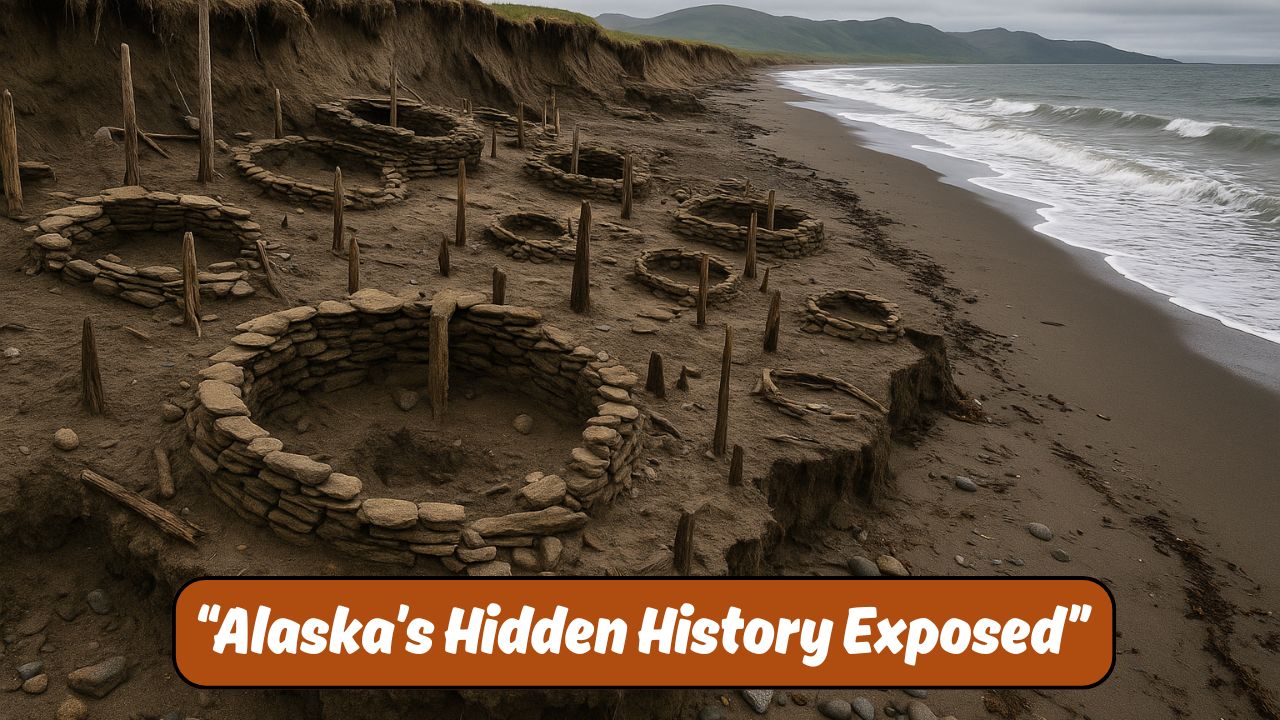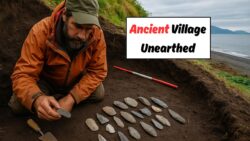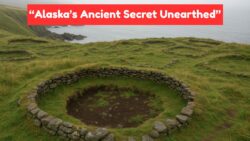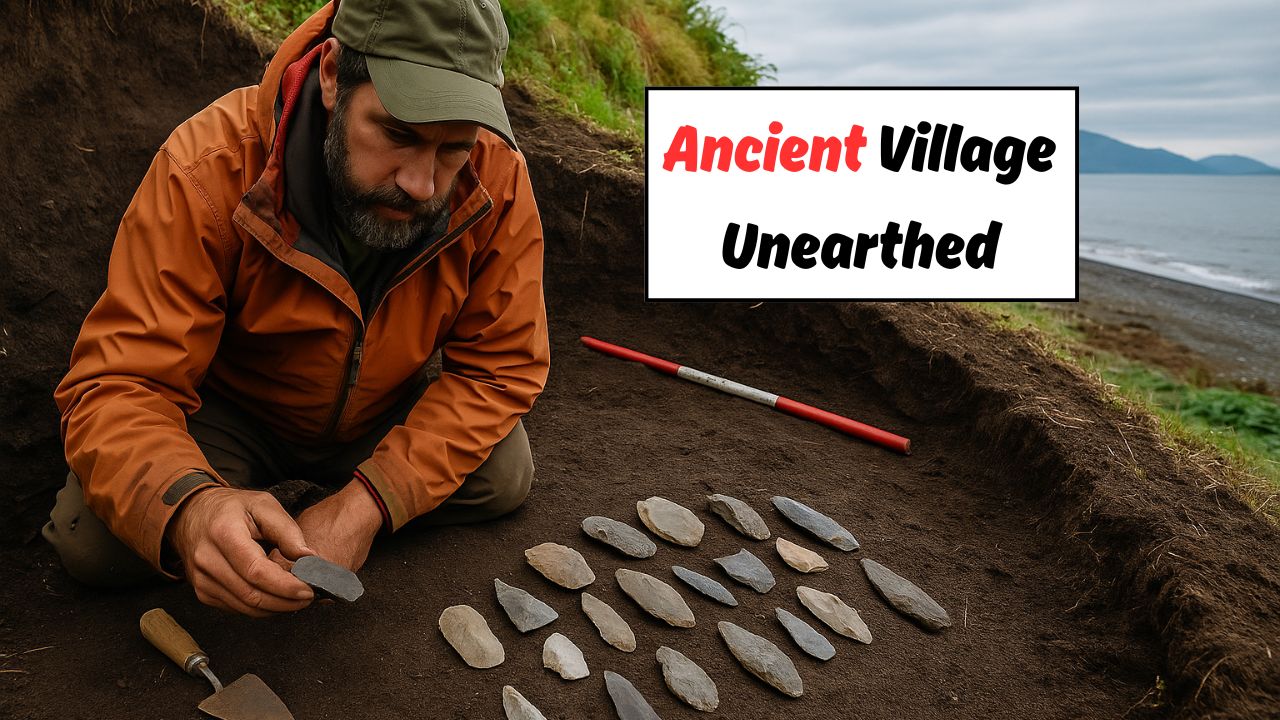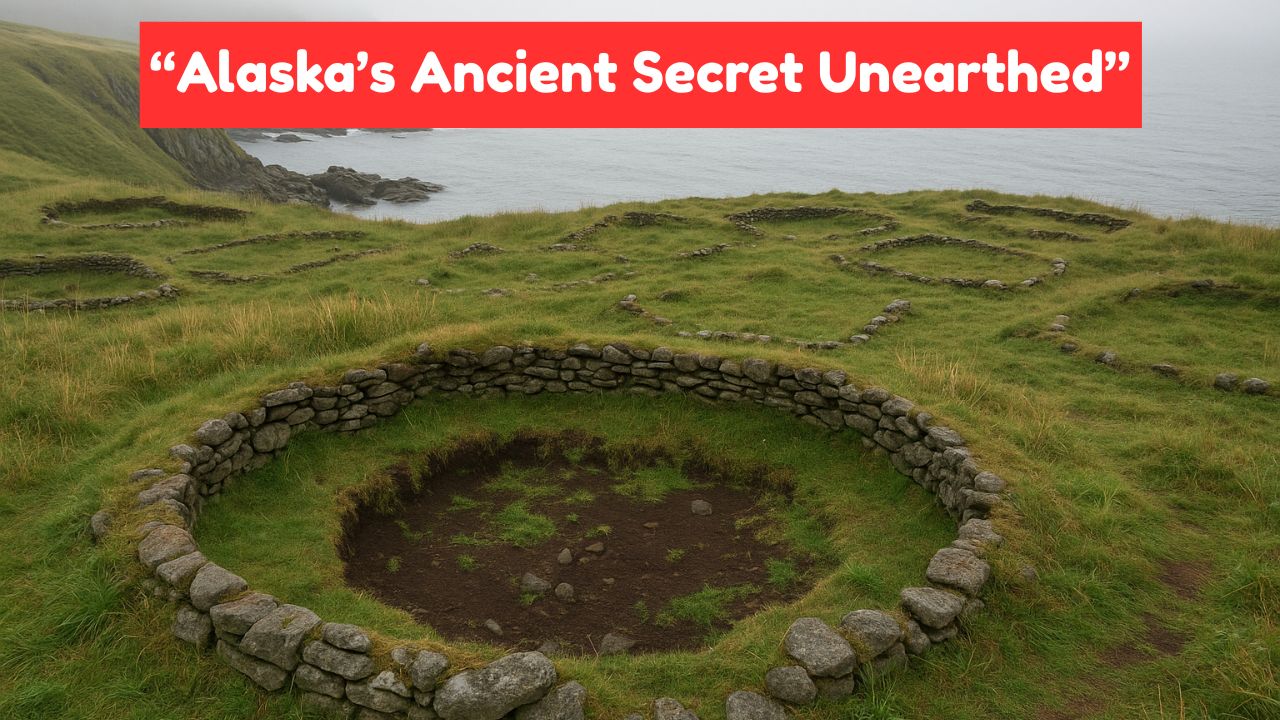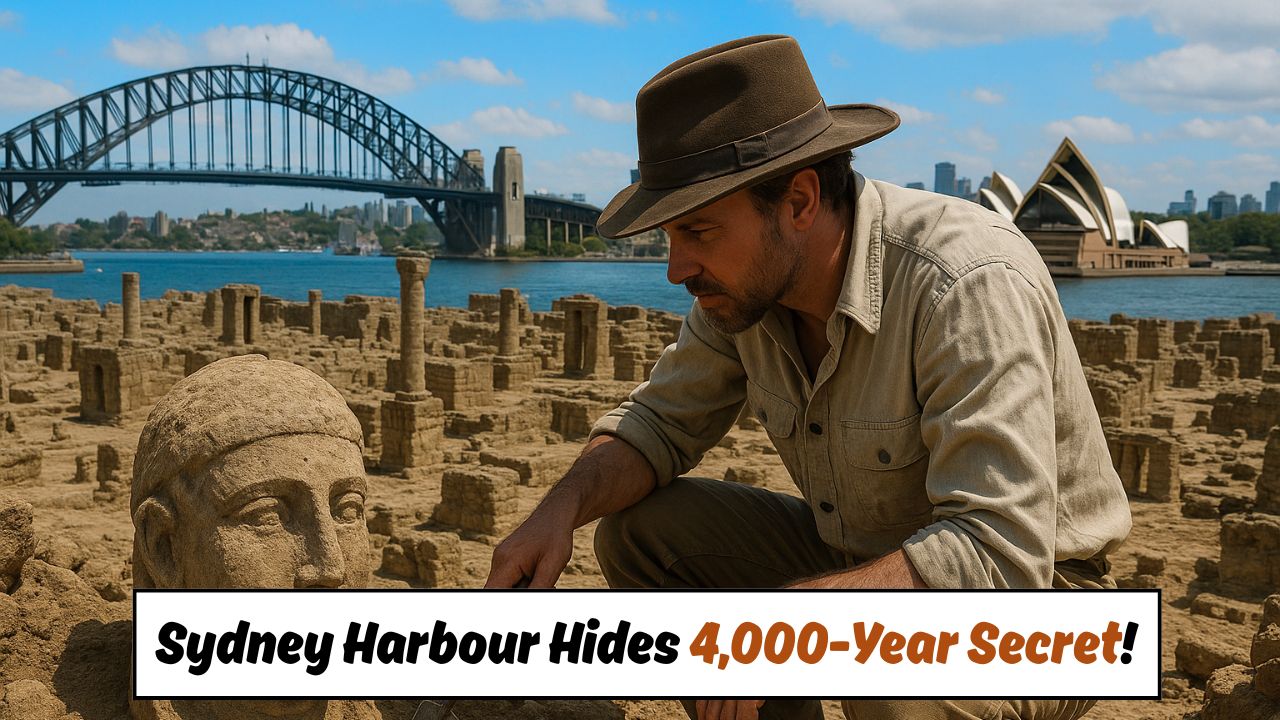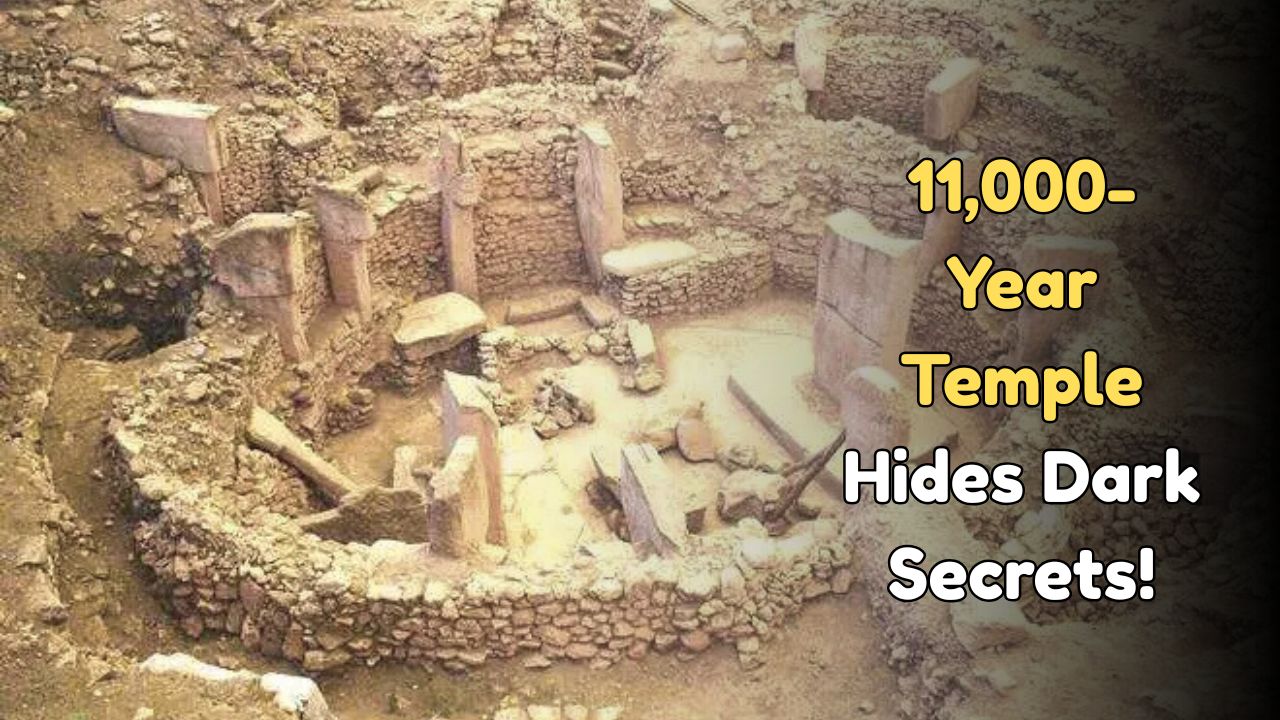7000-Year-Old Indigenous – In a remarkable twist of fate, nature has unearthed one of North America’s oldest archaeological secrets. Along the remote Alaskan coastline, severe beach erosion has led to the accidental discovery of 7,000-year-old Indigenous ruins, offering an extraordinary glimpse into the continent’s ancient past. As waves continue to reshape the landscape, the emerging artifacts are rewriting what we know about early human settlements in Alaska. The site, found near the rapidly retreating shoreline of the Gulf of Alaska, has stunned archaeologists, environmentalists, and Indigenous communities alike. Once buried beneath layers of sand and time, the ruins—believed to be remnants of early semi-permanent dwellings and ceremonial spaces—are slowly being uncovered by erosion caused by melting permafrost, rising sea levels, and intensified storms. But with each passing season, the fragile remains face growing threats of destruction unless immediate conservation efforts are made.
Ancient Civilization Unearthed by Nature’s Forces
As the coastline recedes due to climate-related erosion, archaeologists are racing against time.
- Location: Gulf of Alaska, near coastal Indigenous territories
- Time Period: Estimated 7,000 years old (Early Holocene period)
- Initial Discovery: Erosion exposed fragments of pottery and stone tools
- Foundations: Evidence of early wooden-framed housing and hearths
- Burial Sites: Possible ceremonial burial grounds with human remains
- Unique Features: Carved animal bones, obsidian flakes, woven grass mats
- Scientific Methods Used: Carbon dating, ground-penetrating radar (GPR), and DNA sampling
These remains are believed to belong to ancestral communities of modern-day Alaska Native groups, including the Sugpiaq (Alutiiq) and Eyak people.
Climate Change – The Unlikely Archaeologist
Though erosion threatens many coastal communities, it has also inadvertently become a tool for discovery.
| Cause of Erosion | Impact on Site | Frequency |
|---|---|---|
| Permafrost Thawing | Soil instability, structural loss | Increasing |
| Sea-Level Rise | Coastal flooding | Every high tide |
| Stronger Storms | Shoreline collapse | Seasonal |
| Wave Action | Layer exposure | Daily |
| Wind Patterns | Topsoil removal | Intermittent |
| Ice Melt Runoff | Riverbank weakening | Annual Thaw Cycle |
| Human Activity | Foot traffic, ATV damage | Uncontrolled |
The paradox is painful—while global warming is destroying history, it is also revealing it.
What the Ruins Reveal About Alaska’s Earliest Inhabitants
The artifacts tell a rich story of a culture long predating colonization.
- Community Structure: Semi-permanent wooden homes hint at seasonal migration
- Resource Use: Tools made from whale bone, walrus tusk, and obsidian
- Spiritual Practices: Burial mounds and symbolic carvings indicate complex rituals
- Subsistence Lifestyle: Evidence of fishing, seal hunting, and berry gathering
- Inter-Community Contact: Traded materials suggest vast regional networks
These early Alaskans lived in harmony with the land, crafting tools and shelters from local resources in ways that supported generations of sustainable living.
Indigenous Voices Reclaim the Narrative
Indigenous communities are now leading the push to preserve and interpret the site with cultural sensitivity.
| Indigenous Group | Connection to Site | Role in Preservation | Cultural Significance |
|---|---|---|---|
| Sugpiaq (Alutiiq) | Ancestral Homeland | On-site guidance & naming | Ritual and seasonal knowledge |
| Eyak | Regional Neighbors | Oral history contribution | Migration, trade routes insight |
| Tlingit | Nearby Tribe | Artifact documentation | Maritime knowledge preservation |
| Alaska Native Corporations | Legal Custodians | Collaboration with archaeologists | Ethical handling & repatriation |
Elders have begun sharing oral traditions that align with the findings, adding spiritual and historical context that science alone cannot provide.
What Happens Next – Preservation or Loss?
Archaeologists and tribal councils are working together to develop protective strategies.
- Immediate Artifact Recovery
– Rescue delicate items before tide destroys them. - Digital Archiving
– 3D scans and drone mapping for virtual preservation. - Cultural Interpretation
– Led by Indigenous scholars and elders. - Relocation of At-Risk Objects
– Transfer to regional museums or tribal centers. - Awareness Campaigns
– Education and media coverage to secure funding. - Climate Resilience Planning
– Coastal reinforcement and environmental monitoring. - Federal Protection Proposal
– Push for National Heritage status by 2026.
The Global Importance of the Alaskan Coastal Site
This discovery does not just impact Alaska—it reshapes global understanding of human migration and ancient life.
- Bering Land Bridge Theory: Offers new insights into early post-glacial migrations
- Arctic Adaptation Evidence: Shows early humans survived extreme cold
- Trans-Pacific Trade Speculation: Possible obsidian origins link to Asia
- Historical Gaps Filled: Dates align with key Holocene climate shifts
- Cultural Collaboration Model: Sets standard for joint preservation efforts
As waves crash and tides rise, Alaska’s ancient past teeters on the brink of vanishing forever. The emergence of these 7,000-year-old Indigenous ruins is both a historic breakthrough and a conservation crisis. These remnants whisper stories of survival, spirituality, and sustainable living—stories that risk being washed away if swift action is not taken. Let this discovery be more than a fleeting headline. Let it be the start of honoring and protecting the ancient wisdom etched into the lands we stand on today.
